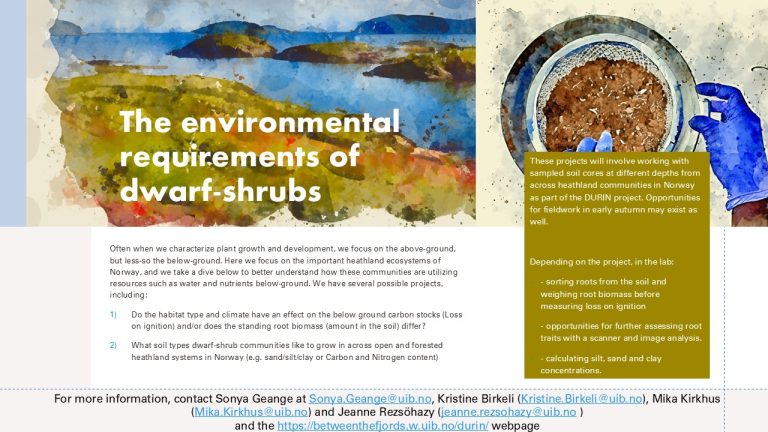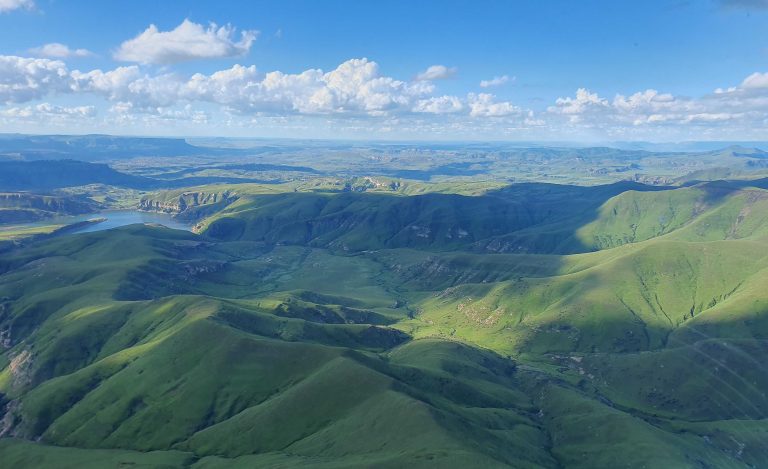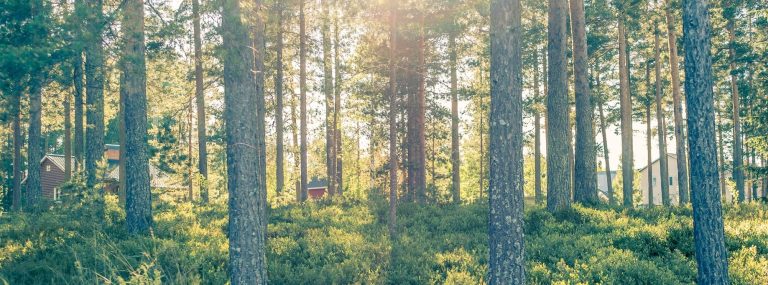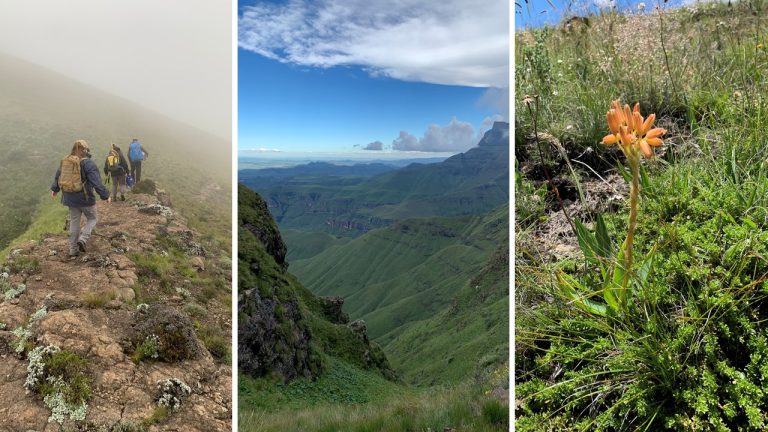Often when we characterize plant growth and development, we focus on the above-ground, but less-so on the below-ground. Here we focus on the important heathland ecosystems of Norway, and we take a dive below to better understand how these communities are utilizing resources such as water and nutrients below-ground. We have several READ MORE
Author: Dagmar
MSc thesis: opportunities in the NatuRA Project
Background Mountain grassland ecosystems support a wide range of ecosystem functions and services, including provisioning services via grazing pastures for wild and domesticated herbivores, supporting services, especially clean water and carbon sequestration, and cultural services through supporting traditional livelihoods. World wide, alpine ecosystems have traditionally been managed as communal rangelands inhabited by indigenous people and READ MORE
New PhD student: Hanif Kawousi
Hello! My name is Hanif Kawousi. I’ve lived in Bergen for the past seven years, the last five with my wife and dog. Some of you may recognise me from classes or the hallways, as I recently graduated from BIO. I am excited to extend my journey at BIO as a PhD student with the READ MORE
A Tool Box for Early Career Researchers going to big conferences
By Joseph Gaudard The European Geosciences Union Annual Meeting is a major conference in natural science, and a good place to present “almost finished work”. It is also a terrifying event, with about 20’000 participants on site. In 2024, I was a first time attendee going there alone. It was a lonely week of READ MORE
Conference blog: My trip to Oikos Bodø (a student perspective)
Hi! I’m Elias Eide Skaslien, and I am a master’s student in Between the Fjords. For my master project I will be working with Kristine Birkeli and Durin to investigate diurnal fluxes across different macro- and microclimates in Norwegian heathlands. Earlier this spring (April 9th–12th), I had the opportunity to attend the Oikos conference in READ MORE
New season, new intern students
With the start of spring come the preparations for a new field season… and the arrival of new internship students who will get to experience what it is like to work in an experimental field ecology lab! In April, we welcomed interns Marine Dange and Ilko Sijbesma. We asked them to introduce themselves to you: READ MORE
New collaboration in Durin project: meet Sarah Schwieger
Sarah Schwieger from Umeå University (Sweden) recently received funding for a project in collaboration with Durin. We are excited to have her on the team and look forward to adding valuable insights on belowground processes to the project! Read further to learn more about her and her research plans: I am Sarah Schwieger, a READ MORE
We are hiring: PhD in applied ecology – Ecobudgets
Come work with us! ECOBUDGETS looks at how a budgeting approach to land management can lead to political decisions that take into account national and local goals for nature and climate. Several municipalities are developing methods and tools for using map-based approaches in land management, for example through nature accounts and climate budgeting. Bergen Municipality READ MORE
New projects funded: NatuRA and INTEREST
The Between the Fjords group has received funding for two new research collaborations between Norway and South Africa. These projects build on long-term collaboration with Peter Le Roux (University of Pretoria) and V. Ralph Clark (Afromontane Research Unit at the University of the Free State) in South Africa through the Plant Functional Trait Courses and READ MORE
MSc thesis opportunities in project DURIN
Background Dwarf-shrubs (Ericaceae) are a dominant plant functional group across the boreal, arctic, and alpine biomes, where they play important roles for biodiversity, ecology and ecosystem functioning. For example, dwarf-shrubs provide important food resources for grazers, pollinators, and people, they are habitat for other plants, insects, rodents, and birds, and through interactions with belowground fungal READ MORE





